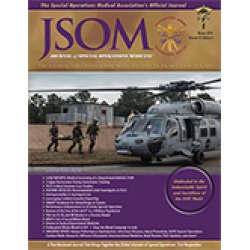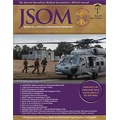Getting "SMART" on Shock Treatment: An Evidence-Based Mnemonic Acronym for the Initial Management of Hemorrhage in Trauma
Thompson P, Hudson AJ 19(4). 62 - 65 (Journal Article)
Treating hemorrhagic shock is challenging, the pathology is complex, and time is critical. Treatment requires resources in mental bandwidth (i.e., focused attention), drugs and blood products, equipment, and personnel. Providers must focus on treatment options in order of priority while also maintaining a dynamic assessment of the patient's response to treatment and considering potential differential diagnoses. In this process, the cognitive load is substantial. To avoid errors of clinical reasoning and practical errors of commission, omission, or becoming fixated, it is necessary to use evidence-based treatment recommendations that are concise, in priority order, and easily recalled. This is particularly the case in the austere, remote, or tactical environment. A simple mnemonic acronym, SMART, is presented in this article. It is a clinical heuristic that can be used as an aide-mémoire during the initial phases of resuscitation of the trauma patient with hemorrhagic shock: Start the clock and Stop the bleeding; Maintain perfusion; Administer antifibrinolytics; Retain heat; Titrate blood products and calcium; Think of alternative causes of shock.


 Español
Español 




